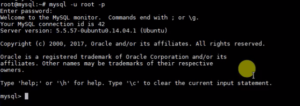

- #HOW TO INSTALL CURL ON UBUNTU 14.04 HOW TO#
- #HOW TO INSTALL CURL ON UBUNTU 14.04 UPDATE#
- #HOW TO INSTALL CURL ON UBUNTU 14.04 UPGRADE#
- #HOW TO INSTALL CURL ON UBUNTU 14.04 PLUS#
- #HOW TO INSTALL CURL ON UBUNTU 14.04 FREE#
We have to modify Apache to listen on port 8080 to fetch data to Varnish. As you know Apache default listen port is 80. We have set varnish to get data from Apache on port 8080. port = “8080″ backend default Configure Apache to work with Varnish on Ubuntu 14.04 Check default.vcl file to make sure your default backend port is set to 8080 # nano /etc/varnish/default.vclĪnd you should have. You want to change that to 8080 and later we will change Apache listen port 8080 to fetch data to varnish. In Centos Varnish have default backend at port 80. default.vcl file tells varnish where to get data from Apache web server. Next, we will configure Varnish default file which is located at /etc/varnish/default.vcl. The final /etc/default/varnish after adjust Varnish listening port and caching size should look like Alternative 2, Configuration with VCL Varnish stores data on disk and then pulls it into RAM to accelerate requests.
#HOW TO INSTALL CURL ON UBUNTU 14.04 FREE#
For example I have 2 GB ram in total, and I have 1.5G free ram, I want Varnish cache to have 1G of RAM to do it’s caching stuff. Depends on how much free RAM you have in your system, adjust Varnish cache size here. Normally I give varnish 50% to 70% of free RAM. Replace -a :6081 to port 80 to make varnish stay in front of Apache DAEMON_OPTS="-a :6081 \Īlso at -s malloc,256m line, the 256m is the default varnish cache size, you can increase or decrease Varnish cache size here. # one content server selected by the vcl file, based on the request. # Listen on port 6081, administration on localhost:6082, and forward to

Search for Alternative 2, you should see something like this Alternative 2, Configuration with VCL You need to setup some basic basic configurations after you installed Varnish in order to make Varnish serves contents on port 80 and gets data from Apache on port 8080. In Ubuntu 14.04 Varnish configuration file will be locate at “/etc/default/varnish”. # echo "deb precise varnish-3.0" | sudo tee -a /etc/apt/sources.list
#HOW TO INSTALL CURL ON UBUNTU 14.04 UPDATE#
We are going to install varnish package through their repository # apt-get update apt-get install curl nano Install Varnish on Ubuntu 14.04 Apache2 Web Server
#HOW TO INSTALL CURL ON UBUNTU 14.04 HOW TO#
>sudo apt-get install libapache2-mod-php5.I have shown you how to install and configure LAMP server Linux, Apache, MySQL, PHP on Ubuntu 14.04 LTS. >sudo LC_ALL=C.UTF-8 add-apt-repository ppa:ondrej/php5-compat

# The following is needed only if you are migrating from old PPA to new PPA? >sudo apt-get install php5.6 php5.6-cli php5.6-common php5.6-curl php5.6-gd php5.6-intl php5.6-json php5.6-ldap php5.6-mcrypt php5.6- mysql php5.6-readline php5.6-xmlrpc # which I did not include in the following command. # There are a more php_extensions shown in. # I installed the 5.6-version of all the php5 extensions reported in the above command. Thanks to Ondřej Surý for his feedback and help with the script.
#HOW TO INSTALL CURL ON UBUNTU 14.04 UPGRADE#
Here is the final set of commands I used to upgrade php5.5 to 5.6 on ubuntu 14.04 >sudo apt-get install libapache2-mod-php5.6 # Tell apache2.4 to use the PHP5.6 version Sudo LC_ALL=C.UTF-8 add-apt-repository ppa:ondrej/php5-compat # I think the following is needed only if you are migrating from old PPA to new PPA?

>sudo apt-get install php5.6 + extensions.
#HOW TO INSTALL CURL ON UBUNTU 14.04 PLUS#
# So, in the next command, should the list of extensions be the ones that moode needs, plus any that are already installed but which moodle is not using? # the list shown from the above command is not the same as the list of required extensions shown in # see which php-extensions are currently installed >sudo LC_ALL=C.UTF-8 add-apt-repository ppa:ondrej/php // LC_ALL needed for non UTF-8 locales. Lots of conflicting information out there. Struggling to find a process for doing this without getting into a twist.


 0 kommentar(er)
0 kommentar(er)
